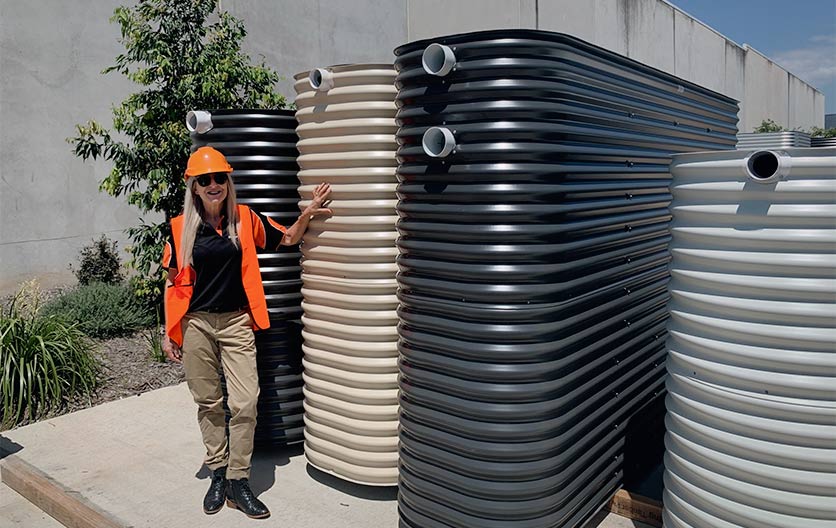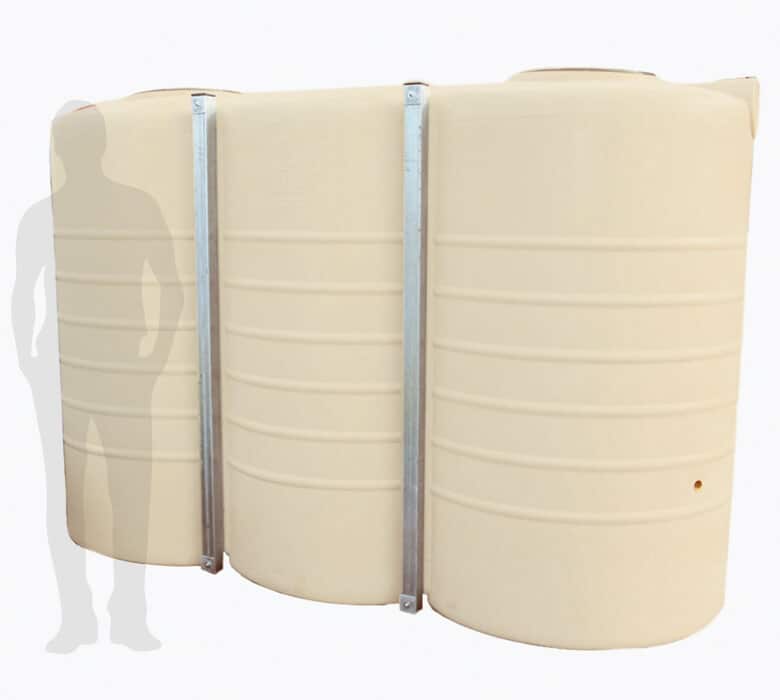Slimline Water Tanks: Space-Saving Solutions for Little Characteristics
Slimline Water Tanks: Space-Saving Solutions for Little Characteristics
Blog Article
Discovering the Numerous Usages of Rainwater Storage Tanks for Residential and Commercial Characteristics
As the international focus on sustainable living methods continues to magnify, the utilization of rain tanks in both domestic and business settings has emerged as a significant option. The multifaceted uses of rainwater storage tanks present a compelling situation for their fostering, not only as a practical water-saving measure but also as a testimony to accountable source management.
Advantages of Making Use Of Rainwater Containers
Using rainwater storage tanks provides numerous benefits for both households and communities in terms of water conservation and sustainability. One of the crucial benefits of using rainwater containers is the considerable decrease in dependence on keys water supply - Slimline water tanks. By recording and storing rain for later usage, individuals and areas can lower their need for cured water, eventually reducing the burden on water therapy facilities and reducing energy intake related to water transportation and therapy
Furthermore, rain collecting with containers gives a trustworthy alternative water resource during times of water constraints or shortages. This stored rain can be utilized for different non-potable purposes such as watering, flushing commodes, and cleaning clothing, decreasing the stress on conventional water resources. In addition, utilizing rain containers can result in cost savings for both homes and areas by reducing water expenses and reducing the requirement for costly framework developments to meet expanding water needs.
Fundamentally, the utilization of rain tanks offers a sustainable and eco friendly technique to water monitoring, benefiting both specific users and the wider neighborhood in terms of water preservation, cost-efficiency, and strength.
Rainwater Tank Use in Irrigation
Offered the benefits of rain tanks in preserving water resources and reducing dependence on keys water, a significant application hinges on making use of kept rainwater for irrigation purposes - Slimline water tanks. Rainwater collecting systems can properly accumulate and keep rainwater, giving a sustainable water source for watering gardens, yards, and agricultural fields. By utilizing rain for watering, homeowner can reduce their reliance on cured water resources, causing set you back financial savings and environmental advantages

Among the main benefits of utilizing rain for irrigation is its purity. Rain is naturally soft and devoid of the chemicals and ingredients usually located in mains water, making it suitable for beneficial plants without the risk of dangerous results. Additionally, rainwater goes to ambient temperature, which can benefit plant growth by avoiding temperature level shocks that can accompany cold keys water.
Rainwater Storage Tanks for Bathroom Flushing

Implementing rain tanks for commode flushing is a cost-effective and eco-friendly method that can be conveniently incorporated right into both property and commercial residential properties. The saved rainwater can be made use of to purge commodes by linking the container to the existing pipes system. This basic yet efficient solution can significantly lower water usage in a building, particularly in locations where water scarcity is an issue.

Including Rainwater Tanks in Landscape Design
An efficient approach for improving sustainability in landscape design involves integrating rainwater containers to enhance water usage and promote environmentally friendly practices - Slimline water tanks. Including rainwater containers in landscape design offers many advantages for both residential and business residential or commercial properties. These containers can record and store rain runoff from roofings, which can then be utilized for sprinkling gardens, yards, and plants. By using rain for watering purposes, property owners can minimize their reliance on community water resources, resulting in cost financial savings and conservation of valuable water resources.
In addition to offering a lasting water resource for landscape design requirements, rainwater storage tanks can likewise assist in review managing stormwater drainage. By catching rain that would otherwise flow into tornado drains pipes, these tanks can minimize disintegration, lower flooding risks, and avoid contamination of all-natural water bodies. Incorporating rain storage tanks in landscape design can contribute to the general visual allure of the building, showcasing a dedication to ecological stewardship.
Commercial Applications of Rainwater Containers
Utilizing rain tanks in commercial click here to find out more settings provides a lasting option for water administration and conservation, profiting organizations and the setting alike. Commercial applications of rainwater containers are varied and increasingly prominent because of the price financial savings and ecological benefits they give. One essential commercial use is for irrigation purposes, where gathered rain can be used to water landscaping, gardens, and farming areas bordering commercial residential properties. This can cause substantial reductions in water costs and dependence on community water sources.
Additionally, rain tanks can be incorporated right into the fire suppression systems of industrial structures. By having a devoted water source for firefighting purposes, businesses can enhance their fire precaution and possibly lower insurance coverage costs. Additionally, rainwater accumulated in storage tanks can be treated and made use of for non-potable purposes within business residential or commercial properties, such as flushing toilets, cleansing, and cooling systems. This not only saves freshwater resources but also reduces operating expense for companies. Overall, the consolidation of rainwater storage tanks in business setups presents a sensible and environmentally accountable method to water management.
Conclusion
From irrigation to commode flushing and landscaping, the use of rain tanks can aid conserve water resources and lower water expenses. Overall, the convenience and sustainability of rainwater containers make them an important financial investment for any property find here proprietor looking to boost water efficiency.
Report this page